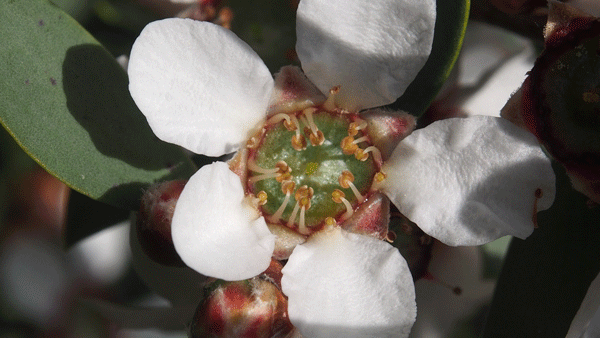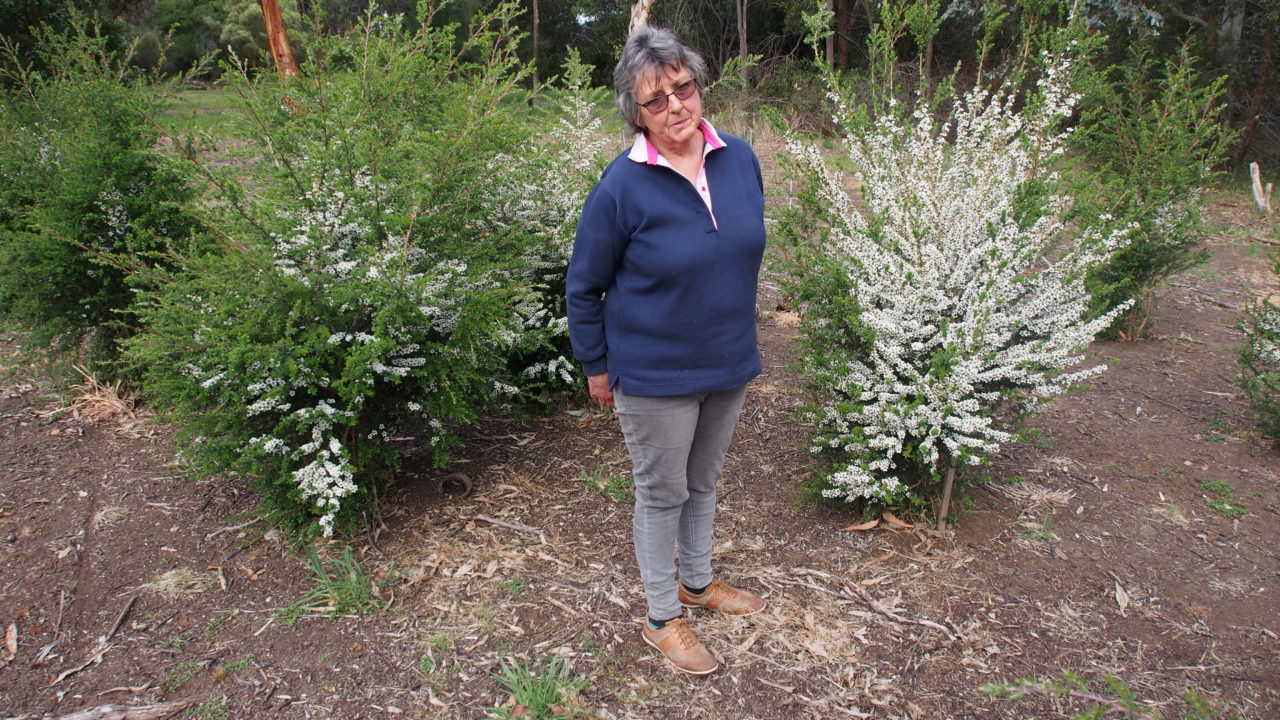
These plants will flower or two in year 2 and as they mature going into year 3 the flowering will become more prolific. Generally speaking, full flowering will occur in Year 3 onwards as the plants develop some significant aboveground biomass. It is fair to say that these plants may not produce much nectar in the first year of flowering (at year 2). It is reasonable to assume that a nectar flow will occur in year 3, provided of course that all the necessary ‘planets align’ (rainfall, day temperatures etc)
The flowering period is typically 6 weeks to 2 months. Some individuals within a community will start flowering while others will flower later. The actual length of the flowering of individual plants is not 2 months but a matter of maybe weeks but as a community, the flowering lasts up to 2 months from the very first flowers to the very last flowers.
It needs to be emphasised that this will be affected by fluctuating climatic conditions particularly rainfall, hail events, storms and so on.
It is expected that in a managed environment these plants will have a lifespan of 30 to 40 years
A rain event and/or an irrigation application at the time of bud formation may assist flowering density.

Leptospermum scoparium (coastal form) planted as seedlings in November 2016 photographed in October 2018. These are in my then garden in Western Victoria. Hand watered during the first Summer due mainly to the late planting.
The plant on the right began flowering earlier (and will finish flowering earlier) than the plant on the left. From a beekeeping perspective, this is a desirable feature as it extends the overall length of the flowering period within this community of plants. It also one of a number of reasons that illustrates that using single clones in a plantation system is an unwise approach.
This above picture is an illustration of flowering at 2 years on plants averaging around 2m in height.